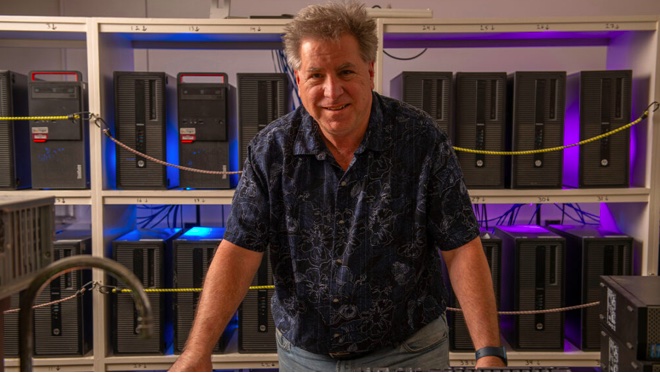By Da’ Ron Frost
Staff Writer
President Obama has honored California State University, Dominguez Hills, for its work in the community service field.
CSUDH has been honored with “distinction” for the 2015 President’s Higher Education Community Service Honor Roll within the “General Community Service” category.
CSUDH is one of 14 California State Universities that were recognized this year for its commitment to community service, service-learning and civic engagement.
The honor roll recognizes U.S. colleges and universities that support outstanding community service programs and raise the visibility of practices in campus community partnerships. Being on the honor roll is the highest federal honor universities can receive for volunteer service.
CSUDH has many organizations heavily involved in volunteering practices such as the Center for Service Learning, Internships, and Civic Engagement (SLICE). Students average 150,000 hours in community service through campus organizations and their classes. According to Dateline Dominguez, 65 percent of CSUDH students engage in service learning, both through formal curriculum and SLICE.
“This university is known for its compassion towards other people,” said Administrative Assistant for SLICE, Miami Gelvezon. “That compassion and willingness to help, transcends into why we got this award. It really reflects the love of helping from our students and also faculty.”
This is the fifth time CSUDH has been on the honor roll for “distinction” after previously being honored every year from 2009 through 2012. In 2013 CSUDH was a “finalist” for the Presidential Award, the highest honor possible, and was awarded with it in 2014.
“It is an honor to be consistently recognized for the exceptional work of our students, faculty and staff do each year engaging and lifting up local communities, and those across the globe,” said CSUDH President Willie J. Hagan to Dateline Dominguez. “We are a compassionate campus community, dedicated to creating the next generation of leaders by challenging our students to tackle tough issues and create positive impacts in the community.”
SLICE aims to involve students and faculty in the community. It coordinates, supports, and advances community engagement for the university. Students involved in SLICE volunteer to mentor students from preschool through high school on topics ranging from college prep, job interviewing and negotiation, homework help, and conflict resolution.
SLICE also works with The Jumpstart for Young Children Program that has been here for five years. It is a core program that works with preschool students, helping them with language and literacy development.
“We really try to encourage our students to get connected to the community whether it’s through service learning classes, through short term volunteer work, or through internships,” said Gelvezon. “What we want is for them to utilize the education they are obtaining here in the university and use it to address social issues that are happening and surrounding their communities.”
The Peace Club has contributed a great portion to the 150,000 service hours CSUDH has under its belt. The club has 318 members, and according to Peace Club President, John Ruiz, these members average 40 hours of community service per semester.
“The Peace Club aims to create social unity between people in order to spread peace throughout individuals, our community, our country, and our world,” said Ruiz.
Recently, the Peace Club volunteered in a “Women’s Toiletry Drive” to donate feminine sanitary products to homeless shelters. They also volunteered at “Fred Jordan Mission’s Back-to-School New Clothing Giveaway,” an event that gifts clothes, school supplies, haircuts, hygiene kits, and nourishing food to the underprivileged youth of Los Angeles. They do this through donations from companies, churches, schools and individuals.
Ruiz believes CSUDH being honored with “distinction” is the product of a group effort between students, staff and faculty.
“We do deserve it because there’s a ton of clubs that try to get a lot of people involved, but its not just student leadership,” said Ruiz. “Its also the leadership on the staff and faculty that try to promote all these good things and all these opportunities.”

